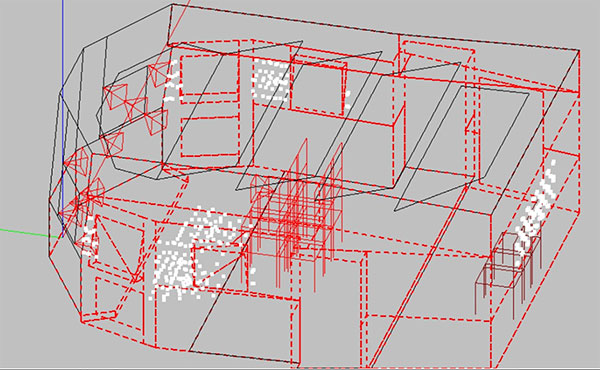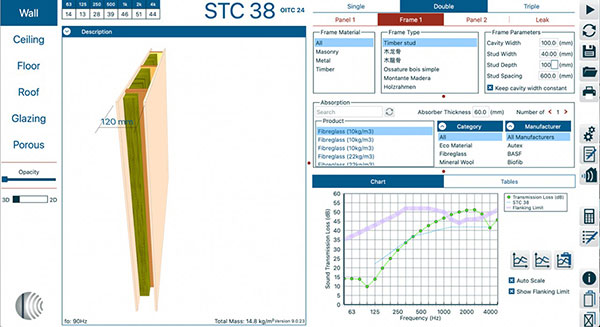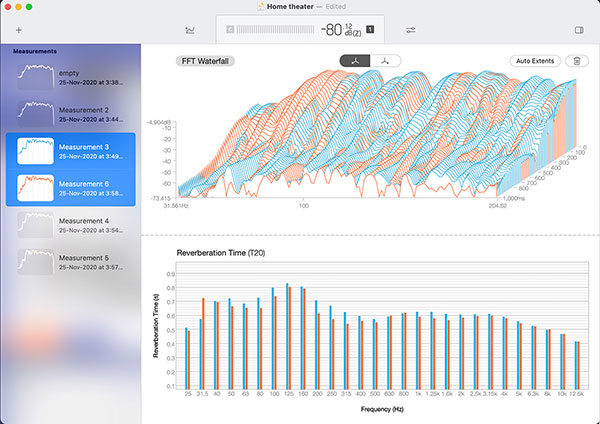Technical Focus – Audio Design & Acoustics
Acoustic and Audio System Design for Small Rooms - PART 6
By - Rahul Sarma, CEO, Menura Acoustic Labs in collaboration with Sound Wizard

We started this series with the definition of a small room, and went on to discuss wave interactions. We continued onto sound isolation, absorption and diffusion in parts 2 and 3. Parts 4 and 5 covered system design goals and finally how to optimize a system. While this is by no means a comprehensive list of acoustic and audio topics, it hopefully demonstrates a more practical approach to design, highlighting theory only when its understanding is absolutely vital to your design approach.
In this last and final part, we will focus on the software and hardware tools required to design, install and optimize a “small” room and audio system.
Software
Acoustic simulation
While acoustic simulation has more uses for larger spaces, it can also be deployed in small room design as long as its limitations are understood. AFMG EASE is the industry standard simulation software for larger spaces, in part due to its comprehensive database of loudspeaker manufacturers and acoustic materials. For high end listening rooms and studios, we use EASE to plan the placement and amount of acoustic treatment. Ray tracing can be used to find first reflection points between speakers and listener seats, and reverberation time simulation tells us if we are using the right amount and balance of acoustic treatment for a specific volume of space.

Fig. 1: Control Room design using EASE
In Fig.1, a studio control room has been modelled using EASE. After running a ray tracing simulation, the locations of the first reflection points are visible as white bounces.
It is also a great presentation tool to demonstrate the thought process behind a particular decision, allowing you to justify budgetary decisions. For example, the full version of EASE comes with a module called EARS that allows you to hear a sample audio track as it would sound in the space you are designing. For a client who may not grasp the concept of reverberation time, the ability to auralise what music or speech sounds like in a room with and without acoustic treatment is extremely important. For a consultant or acoustic material manufacturer, this is an invaluable tool.
Acoustic isolation
Although we touched upon this in part 2, it makes sense to revisit INSUL by Marshal Day Acoustics. The acoustical prediction software is used by engineers and architects to predict the sound insulation of walls, floors, ceilings and windows that enclose a space. Using simple theoretical models such as the mass law, and the critical and resonant frequencies of materials, INSUL provides accurate estimates of the transmission loss (dB) and STC (Weighted Sound Reduction Index) values of the composite layers of a surface.
When a sound wave impacts the surface of a solid body, some portion of its energy will be reflected, some absorbed and the rest transmitted through the body. The relative proportion of each depends on the nature of the material impacted. As addressed in part 2, a single layer of any material will have a resonant frequency, therefore a multiple layered partition composed of materials with different densities will work to isolate various frequency bands and result in lower sound transmission across the spectrum. INSUL allows a user to add up to three layers of panels per surface. We then compare its calculated predictions with practical measurements, allowing us to experiment with different materials to either achieve better noise insulation or find cost effective alternatives.

Fig. 2: Partition design with INSUL
Acoustic and audio measurements
There are many great (but expensive) audio analyzers like the NTI XL2 that bundle software along with hardware, but unless you plan on doing a great deal of environmental noise measurements, I find that microphones connected to a laptop through an audio interface gives you much more flexibility and for a much lower investment.
Systune and SMAART are good professional options that can be used for live sound applications as well, but for smaller budgets and installed sound, REW and Fuzzmeasure do an admirable job.
Hardware
Microphones
Whether you are an acoustician or a system designer, a good measurement microphone (or microphones) is an invaluable tool for a variety of jobs. Measuring reverberation time and other acoustical parameters as well as measuring system outputs for installation and optimization, a microphone reveals data that isn’t always audible to the human ear. However, there are instances where microphones cannot replace your ears for system diagnostics, so it is important to always use both to ensure that nothing slips through the cracks. For example, the design of our ears combined with the processing power of our brains gives us the remarkable ability of sound localization. An omni-directional microphone only measures sounds and allows a computer to calculate arrival times, without providing you with any directional information. An example of a great type 1 microphone is the Earthworks M30, although it could be considered overkill for tasks like system tuning and calibration. A reasonable and solid budget microphone is the RTA-425 from Rational Acoustics. Ensure that the frequency response of any microphone you choose is reasonably flat (the signal is not coloured).

Fig 3: FuzzMeasure by Rodetest
Accessories
For system optimization, it is a good idea to have an audio interface that has multiple inputs. Multiple microphones in multiple positions speeds up the process massively, allowing you to take averages and also quickly compare the responses at different listening positions. While calibrating/optimizing a system through a DSP, it is a great idea to carry a wireless router with you to create your own network (in case there is no local network). It is much easier to sit in the listener seats and make edits to a calibration curve as opposed to running to the rack to make every change. Most importantly, carry your own listening test material, whether it be high quality audio files or Blu-ray discs. This will be your benchmark to evaluate every installation that you choose to undertake.
Summary
There is no end to education – even the most knowledgeable pros are constantly learning to keep themselves at the top of their game. Hopefully this series was able to give you some new insights into acoustic and audio system design for small rooms. Feel free to get in touch with any questions you may have, or visit our website to keep an eye on future courses and trainings held at Menura Acoustic Labs HQ!
www.menuralabs.com